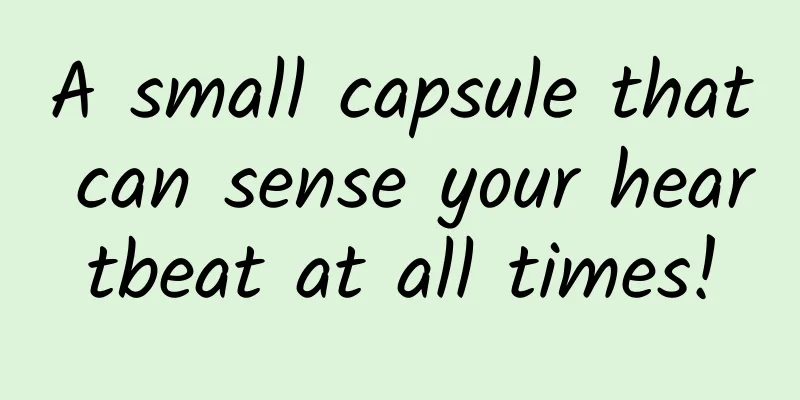Nezha: The Devil Boy Conquers the Dragon King: From Myth to Reality, Exploring the Sequelae of Encephalitis and Sensory Integration Disorder

|
During the 2025 Spring Festival, the animated film "Nezha: The Devil Boy Conquers the Dragon King" swept the country again and became a hot topic among countless audiences. In the film, Nezha, as the reincarnation of the "magic pill", not only possesses extraordinary power, but also faces the challenges of prejudice and self-identity in the world. Today, we will explore Nezha's story from another perspective - linking his experience with sensory integration disorder (SID) in the sequelae of encephalitis, providing parents and readers with a popular science perspective that is both interesting and educational. 1. The connection between Nezha’s “magic pill” origin and sensory integration disorder Nezha, the little hero in mythology, was different from birth. He was born directly into the world without the normal squeezing of the birth canal, missing the first important "tactile awakening" lesson in life. In medicine, squeezing of the birth canal is crucial for the development of the newborn's sense of touch and proprioception. It can help the baby establish a preliminary perception of the external environment and has a profound impact on future emotions, social abilities, etc. Nezha's "abnormal" birth just echoes the symptoms of sensory integration disorders caused by certain brain diseases such as encephalitis in reality. Sensory integration disorder refers to the inability of the brain to effectively integrate sensory information from various parts of the body, which leads to obstacles in individual behavior, learning, emotions, etc. Nezha's performance in the movie, such as difficulty controlling his own strength, social difficulties, and mood swings, all coincide with the typical symptoms of sensory integration disorder. 2. Sequelae of encephalitis: the challenge of the “magic pill” in reality Encephalitis is an inflammation of the brain caused by bacteria, viruses or fungi. It is not only life-threatening, but can also leave serious sequelae. Neonatal meningitis is particularly dangerous, and can lead to varying degrees of hydrocephalus, mental retardation, epilepsy, and sensory integration disorders. These sequelae, like the "magic pill" on Nezha's body, bring endless challenges to the patient's life. • Neurological symptoms : After encephalitis, patients may experience headaches, epilepsy, hemiplegia, limb weakness, etc. These symptoms are similar to Nezha’s difficulty controlling his power in the film. • Cognitive impairment : Memory loss, poor concentration, slow thinking and other cognitive impairments are also common sequelae of encephalitis. Nezha’s difficulty in learning and understanding new things can perhaps be seen as a metaphor for this cognitive impairment. • Emotional and behavioral problems : Emotional and behavioral problems such as mood swings, anxiety, depression, and abnormal behavior also plague patients with sequelae of encephalitis. Nezha’s loneliness, rebelliousness, and impulsiveness in the film are the direct manifestation of these emotional problems. • Sensory integration disorder : As one of the sequelae of encephalitis, sensory integration disorder affects the patient's sense of touch, proprioception, vestibular sense, etc. Nezha's problems with touch (such as not knowing his own strength), proprioception (such as being unable to control his limbs well), and vestibular sense (such as lack of sufficient movement stimulation) are typical manifestations of sensory integration disorder. 3. Nezha’s growth path: scientific response and rehabilitation enlightenment Faced with the challenges of sequelae of encephalitis or sensory integration disorder, Nezha's growth path provides us with valuable inspiration. 1. Acceptance and encouragement : Nezha's parents and master Taiyi Zhenren helped him rebuild his self-awareness by accepting his identity as a "magic pill" and giving him unlimited encouragement and support. In real life, parents and doctors should also treat patients with sequelae of encephalitis with the same attitude, helping them realize their own value and build confidence to overcome difficulties. 2. Cognitive behavioral therapy : Nezha gradually learned to replace the negative thinking of "the magic pill is doomed to be destroyed" with the belief of "my fate is in my own hands". This transformation coincides with the core idea of cognitive behavioral therapy (CBT). CBT helps patients identify and change negative thinking, thereby improving emotions and behaviors. For patients with sequelae of encephalitis, CBT is also an effective psychological intervention method. 3. Social support : Ao Bing's friendship made Nezha feel the power of being understood. Social support is also crucial for patients with sequelae of encephalitis. It can not only alleviate the loneliness of patients, but also reduce the risk of mental illness. Therefore, we should encourage patients to actively participate in social activities and establish a stable network of interpersonal relationships. 4. Professional rehabilitation training : Nezha controls his own power through practice in the film, which is a metaphor for the importance of rehabilitation training. Professional rehabilitation training is indispensable for patients with sequelae of encephalitis. It can help patients restore motor ability, improve cognitive ability, and improve emotional and behavioral problems. Rehabilitation training should be tailored to the specific situation of the patient, including physical therapy, speech therapy, psychotherapy and other aspects. 5. Regular life and exercise : Although Nezha was carrying a "magic pill", he still insisted on practicing martial arts. This sportsmanship is worth learning. Regular life and moderate exercise are also important for the recovery of patients with sequelae of encephalitis. They can help patients maintain physiological rhythms, stabilize emotions, and promote endorphin secretion. IV. Practical operation: How to help patients with sequelae of encephalitis For parents, facing the challenges of patients with sequelae of encephalitis, the following specific measures can be taken: • Seek medical attention promptly : If your child shows symptoms of encephalitis, you should seek medical attention immediately to reduce the incidence of brain damage and sequelae. • Professional assessment : During the child’s recovery process, professional assessments should be conducted regularly to understand the child’s recovery progress and existing problems. • Customized training plan : Based on the professional assessment results, a rehabilitation training plan is tailored for the child. The training plan should include physical therapy, speech therapy, psychotherapy and other aspects. • Family support : Parents should actively participate in their children’s rehabilitation training process and give them enough care and support. At the same time, parents should also learn how to provide an effective rehabilitation environment and stimulation for their children at home. • Social Integration : Encourage your child to participate in social activities and build friendships with peers. This helps your child improve their social skills, self-confidence and a sense of belonging. 5. Conclusion: Nezha’s “defying fate and changing destiny” and its enlightenment to reality The story of Nezha is not only a myth, but also a mirror of real life. It allows us to see the challenges and difficulties faced by patients with sequelae of encephalitis, and also allows us to see the possibility of "changing fate" through scientific response and rehabilitation training. Let us follow Nezha's example and light up the road to recovery for patients with sequelae of encephalitis with acceptance, encouragement, professional training and social support! Through this popular science article, I hope that readers can have a deeper understanding of the relevant knowledge about the sequelae of encephalitis and sensory integration disorder, and provide support and care for those around them who need help. Let us work together to create a healthier and more inclusive social environment! |
<<: The more water you drink, the more damage you will do to your kidneys?
>>: Will eating radishes promote the growth of nodules?
Recommend
How much does it cost for pregnant women to receive oxygen once?
Pregnant women, as a special group, need special ...
Can Jinji tablets effectively treat cervical erosion?
Jinji tablets are effective in treating cervical ...
January “scientific” rumor list: Will the new coronavirus vaccine change human genes?
The January "scientific" rumor list is ...
Can prostate stones also grow? What should I do?
Author: Ouyang Bin Guangzhou First People's H...
A small action can determine whether your knees are healthy! Try it now →
As the saying goes, the legs are the first to age...
Brown discharge after taking Yasmin
In order to improve the quality of sex life, nowa...
What is the thickness of the endometrium during ovulation?
The thickness of the endometrium during ovulation...
What is the cup size of a 32 bra?
What are the sizes of bras 32, 34, 36, 38, 40, 42...
What is the disease of breast lumps? What should I do if I suffer from breast fibroids?
When a lump as big as a pigeon egg appears on the...
Can I still get pregnant after having a vasectomy?
Sterilization is generally done for men or women ...
Obesity not only harms the body, but also the brain?
Obesity, as a complex metabolic disorder, is a ma...
Popularization of health knowledge on gout prevention and treatment
Gout concept formula Now that living standards ar...
How many months of pregnancy should you have Down syndrome screening and what should you pay attention to?
We all know that it is very difficult for every p...
What to eat after breast cancer removal
For female friends, they all care very much about...
Why does milk overflow when there is not much milk?
Even if there is not much milk, symptoms of milk ...









